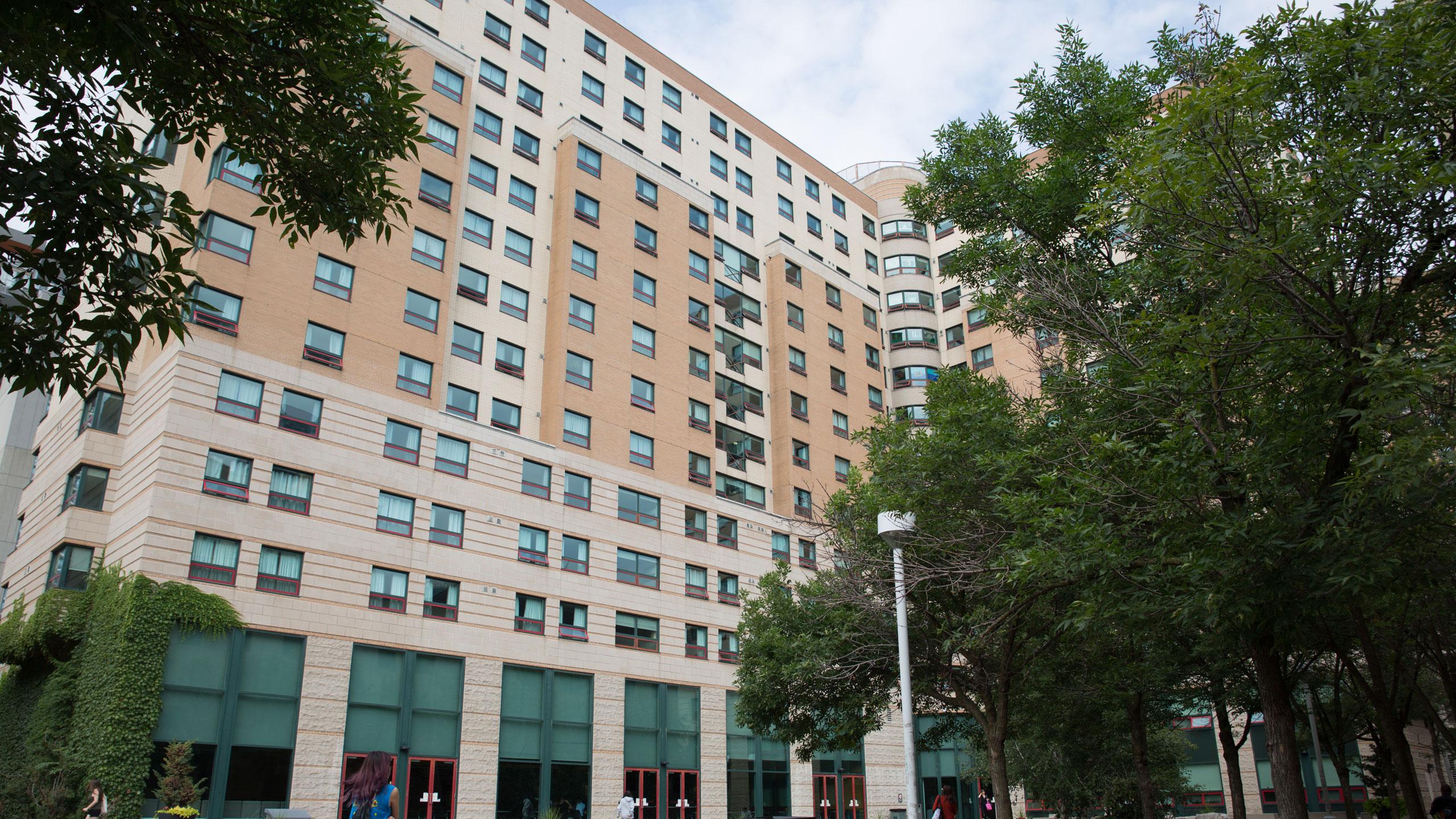By Anna Wdowczyk
Last year, students living in residence were free to interact with as many new peers as they pleased at big social gatherings. But this semester, the corridors of Ryerson’s residences remain quiet.
This past September, the corridors of Ryerson’s residences remained quiet due to strict COVID-19 safety regulations. Unlike last year, students in residence aren’t allowed to host large parties as they’re encouraged to maintain smaller social circles.
Students are also expected to follow the Ontario government’s guidelines for creating social circles in the midst of COVID-19. This means physically interacting with 10 people or less, including family members who don’t live in your house.
James Caza, a first-year media production student living in Pitman Hall said he’s noticed “changes in people’s behaviour” in light of these rules.
Caza, who lives in an apartment-style dorm with a shared kitchen and bathroom that is meant for four students, is living alone due to precautions that support social distancing.
“It was definitely hard in the first week or two to meet people,” said Caza. He added students were hesitant to make new friends right away because they were mindful of the fact that they’re only allowed to physically connect with a few people.
Many students didn’t want to waste one of 10 precious spots on the wrong person, which made them interact with caution, he said.
“Once you did meet someone, you didn’t really want to do anything with them that would suddenly make you commit to them being in your social bubble.”
What does a campus life look like?
Residences that are currently open include the Daphne Cockwell Complex, the International Living and Learning Centre (ILC), Pitman Hall and HOEM.
Ryerson University president Mohamed Lachemi told The Eyeopener that the open buildings are operating at reduced capacity, with only 334 students living in residence compared to the typical 1,100 on-campus residence spaces. New applications for the upcoming winter and fall terms will be accepted so long as there are enough dorms.
In line with the guidelines for public health, plexiglass barriers have been erected at the front desks, said Lachemi.
Other services dedicated to the promotion of health and safety include physical contact monitoring, thorough cleaning efforts and a 24/7 support line for students with flu-like symptoms.
Staff and students must also abide by Ryerson’s face mask policy, keep two metres of physical distance from others and limit the number of guests coming into residence.
The mask policy states that masks or face coverings need to be worn in any enclosed public space, with few exceptions. The only areas in which residents don’t need to wear masks include their own private rooms and bathrooms.
Guests are restricted for now, according to COVID-19 updates on the Ryerson Student Affairs website. However, students were allowed to have two guests each for help during their designated move-in days.
Students who recently travelled or are international students just moving in are able to complete their 14-day self-isolation within their dorm at residence.
When it comes to meeting new people on-campus, students can sign up for various virtual events. There are also some options for attending in-person with social distancing being regulated.
The way dining halls operate at Ryerson has been “significantly impacted” by the pandemic—with only Pitman’s dining hall being open daily for those with meal plans.
The dining hall only serves 50 people at a time for safety reasons, according to Ryerson University Business Services. Areas that were once self-serve are now operated by staff members who have been educated on food handling during the pandemic.
Social distancing and mask rules also apply. Although visitors can remove their masks to eat, they must wear them while entering and exiting the dining hall.
Just like in residential areas, Pitman Dining Hall has incorporated enhanced practices for cleaning and sanitation.
To prevent outbreaks in residence, president Lachemi said the university is always adjusting its pandemic response plan “to reflect any new advice from the government or public health authorities.”
On the positive side…
“There was a long period where I didn’t think I would be coming to residence,” said Caza. “ I wasn’t sure what it would look like and I wasn’t sure if it [residence] would be open. So I think just the fact that it was open and I got in was really exciting for me.”
During the winter 2020 semester, student residents were required to move out of their dorms by March 23 with few exceptions to minimize the pandemic’s spread.
Lachemi told The Eye that a mandatory move out isn’t part of the plan for this winter. “We will continue the same mode of delivery for the winter semester,” he said.
Although Caza didn’t get to have roommates like he originally planned, he said he’s still happy to be on campus this year after all the uncertainty.
“At the end of the day, I didn’t really care what it looked like,” he added.
Some students have been managing to hangout in ways that are “COVID-friendly and still a good way to get to know someone,” said Caza. For example, he explained that he’s seen students going for walks with masks on and eating meals outside while sitting in distanced circles.
Lachemi stated that the current plans for keeping residence buildings open may change if new restrictions are imposed by the government or public health officials.
“We’ll continue to monitor the situation and if anything happens, we’ll communicate with our community,” said Lachemi. He added that “difficult decisions,” like building closures and activity cancellations, will be implemented if necessary.
Lachemi said that student health and safety are Ryerson’s top priority and when it comes to students living in residence, “we will continue to support them.”











Leave a Reply